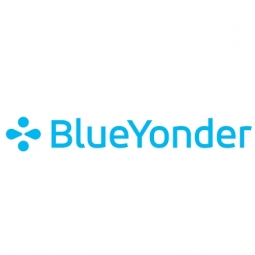公司规模
Large Corporate
地区
- Europe
国家
- United Kingdom
产品
- JDA® Warehouse Management
技术栈
- Automated Storage and Retrieval
- Pick by Light
- Powered Conveyor
- Paperless Operation
实施规模
- Enterprise-wide Deployment
影响指标
- Productivity Improvements
- Customer Satisfaction
技术
- 功能应用 - 仓库管理系统 (WMS)
适用行业
- 药品
适用功能
- 仓库和库存管理
用例
- 库存管理
- 仓库自动化
服务
- 软件设计与工程服务
- 系统集成
关于客户
Teva UK Limited 是英国医疗服务的主要药品供应商。该公司遵守严格的质量程序,以保证其库存的完整性,通过 EAN 编号和批号跟踪产品。库存必须存放在温度受控的条件下,并处于符合最高清洁标准的环境中。该公司每天处理大约 140 个订单,总拣货量平均超过 9,200 箱当量。Teva 将大部分货物分发给药品批发商以及一些自主分销的药店连锁店。然后,药品批发商将药品分发给当地独立药店、医院药店以及大街和超市连锁药店,这些药店再将药品分发给英国患者。
挑战
Teva UK Limited 是英国医疗服务机构的主要医药产品供应商,该公司需要优化其供应链以应对业务日益复杂和规模不断扩大的现状。该公司坚持严格的质量程序以保障其库存的完整性,并通过 EAN 编号和批号跟踪产品。库存必须存放在温度受控的条件下,并存放在符合最高清洁标准的环境中。由于业务日益复杂和规模不断扩大,Teva 决定建立一个新的物流中心,以支持其不断增长的业务量并提供新的方式来服务客户。该公司寻求一种仓库管理解决方案,该解决方案应具有自动存储和检索、按灯拣选、电动传送带和无纸化操作等先进功能,使其能够提高效率、节省成本并改善新设施的服务。
解决方案
在评估了八家技术供应商后,Teva 选择了 JDA Software 的 Intelligent Fulfillment™ 套件中的仓库管理解决方案,因为该公司在制药行业拥有强大的合作伙伴关系和经验。仓库管理解决方案使 Teva 能够优化其所有流程(从进货到客户发货),并跟踪整个供应链中的库存。该解决方案管理 Teva 280,000 平方英尺(25,000 平方米)设施的吞吐量,并使 Teva 能够将危险、形状奇特和高价值物品整合到一个站点,以实现最高效率。Teva 在其设施中存储了 850 多个库存单位。该公司在其专用的物品挑选区域使用按灯挑选技术,从特定区域挑选多个订单。完成后,纸箱通过传送带运送到下一个合适的区域,以进行客户订单包装。自动化处理确保将完成的订单发送到 78 条运输通道之一,纸箱贴上标签并应用安全捆扎。
运营影响
数量效益

Case Study missing?
Start adding your own!
Register with your work email and create a new case study profile for your business.
相关案例.

Case Study
Case Study: Pfizer
Pfizer’s high-performance computing software and systems for worldwide research and development support large-scale data analysis, research projects, clinical analytics, and modeling. Pfizer’s computing services are used across the spectrum of research and development efforts, from the deep biological understanding of disease to the design of safe, efficacious therapeutic agents.

Case Study
Fusion Middleware Integration on Cloud for Pharma Major
Customer wanted a real-time, seamless, cloud based integration between the existing on premise and cloud based application using SOA technology on Oracle Fusion Middleware Platform, a Contingent Worker Solution to collect, track, manage and report information for on-boarding, maintenance and off-boarding of contingent workers using a streamlined and Integrated business process, and streamlining of integration to the back-end systems and multiple SaaS applications.

Case Study
Process Control System Support
In many automated production facilities, changes are made to SIMATIC PCS 7 projects on a daily basis, with individual processes often optimised by multiple workers due to shift changes. Documentation is key here, as this keeps workers informed about why a change was made. Furthermore, SIMATIC PCS 7 installations are generally used in locations where documentation is required for audits and certification. The ability to track changes between two software projects is not only an invaluable aid during shift changes, but also when searching for errors or optimising a PCS 7 installation. Every change made to the system is labour-intensive and time-consuming. Moreover, there is also the risk that errors may occur. If a change is saved in the project, then the old version is lost unless a backup copy was created in advance. If no backup was created, it will no longer be possible to return to the previous state if and when programming errors occur. Each backup denotes a version used by the SIMATIC PCS 7 system to operate an installation. To correctly interpret a version, information is required on WHO changed WHAT, WHERE, WHEN and WHY: - Who created the version/who is responsible for the version? - Who released the version? - What was changed in the version i.e. in which block or module of the SIMATIC PCS 7 installation were the changes made? - When was the version created? Is this the latest version or is there a more recent version? - Why were the changes made to the version? If they are part of a regular maintenance cycle, then is the aim to fix an error or to improve production processes? - Is this particular version also the version currently being used in production? The fact that SIMATIC PCS 7 projects use extremely large quantities of data complicates the situation even further, and it can take a long time to load and save information as a result. Without a sustainable strategy for operating a SIMATIC PCS 7 installation, searching for the right software version can become extremely time-consuming and the installation may run inefficiently as a result.

Case Study
ELI LILLY ADOPTS MICROMEDIA’S ALERT NOTIFICATION SYSTEM
Pharmaceutical production is subject to a strict set of enforced rules that must be adhered to and compliance to these standards is critically necessary. Due to the efforts of WIN 911’s strategic partner Micromedia, Lilly was able to adopt an alarm notification infrastructure that integrated smoothly with their existing workflows and emergency hardware and protocols. These raw energy sources enable the industrial process to function: electricity, WIN-911 Software | 4020 South Industrial Drive, Suite 120 | Austin, TX 78744 USA industrial steam, iced water, air mixtures of varying quality. Refrigeration towers, boilers and wastewater are monitored by ALERT. Eli Lilly identified 15000 potential variables, but limitations compelled them to chisel the variable list down to 300. This allowed all major alarms to be covered including pressure, discharge, quantity of waste water discharged,temperature, carbon dioxide content, oxygen & sulphur content, and the water’s pH.









